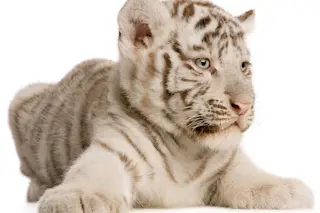The first thing to know about big cats: There’s no official definition of the term big cats.
In the 19th century, anatomist Richard Owen separated the family Felidae into “roarers” and “purrers.” Today, based on that distinction, some definitions consider cats “big” only if they roar — that’s lions, tigers, jaguars and leopards.
Owen thought that the different vocalizations stem from the anatomy of the hyoid, which supports the larynx and tongue. In purrers, this structure is rigid. In roarers, it’s more flexible.
Asia’s snow leopards defy that neat sorting, however. Despite having a flexible hyoid, the stealthy cats that locals call “ghosts of the mountain” don’t roar.
Researchers now think a pad of elastic tissue on the vocal folds, present only in roarers, explains the different vocalizations.
Other definitions group big cats by size and add clouded leopards, cheetahs, snow leopards and cougars. The biggest of the big: the ...















